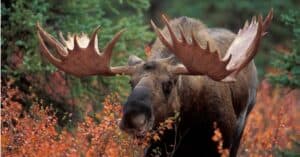Continue reading for our analysis...
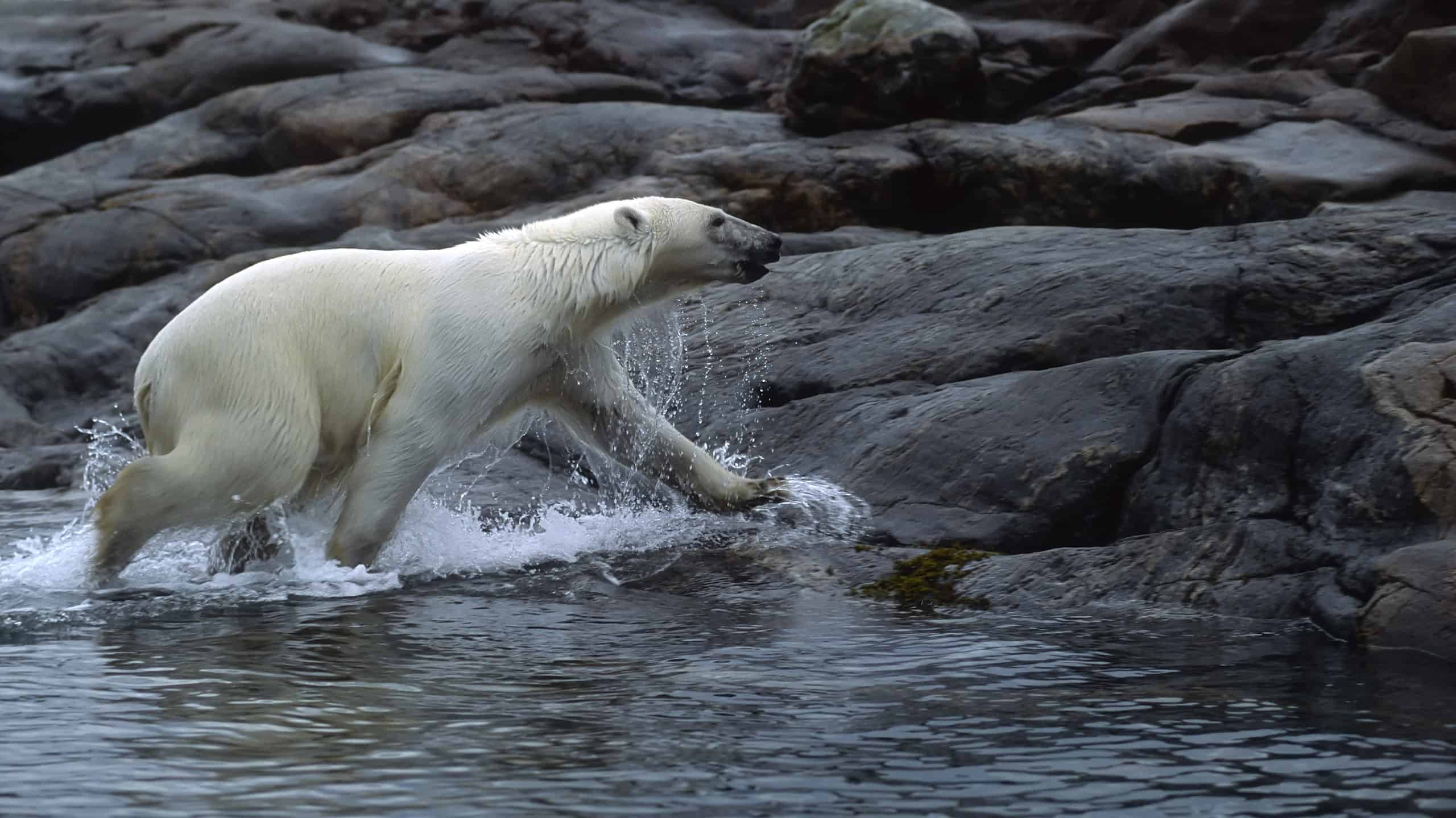
Have you ever seen polar bears hunt beluga whales? Now’s your chance.
Polar bears, known for their large size and unique hunting skills, are popular Arctic animals. One fascinating aspect of these animals is their varied hunting strategies. In this video, you’ll see how one bear displays great patience, strategically waiting for the perfect moment to strike. While a younger, less experienced bear rushes into things and ultimately fails. The video also shows how the tide plays a major role in the bear’s hunting mission.
There’s a bunch of belugas swimming around in this wildlife footage. But only one falls prey to the patient polar bear. As for the impatient polar bear? He winds up catching a bit of seaweed. See for yourself in the video above.
Polar Bear Hunting Tactics
Polar bears are opportunistic hunters. They can wait by an ice hole for hours or even days until a seal appears. Or, in this case, the polar bear is content to wait on a rock until a beluga whale swims close enough to catch it.
Fat polar bears are fit polar bears. To stay healthy, polar bears need at least 4.5 pounds of fat daily. So catching a 3,000-pound beluga whale will give them more than enough calories to survive. Healthy bears have up to 2 to 4 inches of fat, that serves as energy storage when food can’t be found. The fat also provides insulation from freezing temperatures.
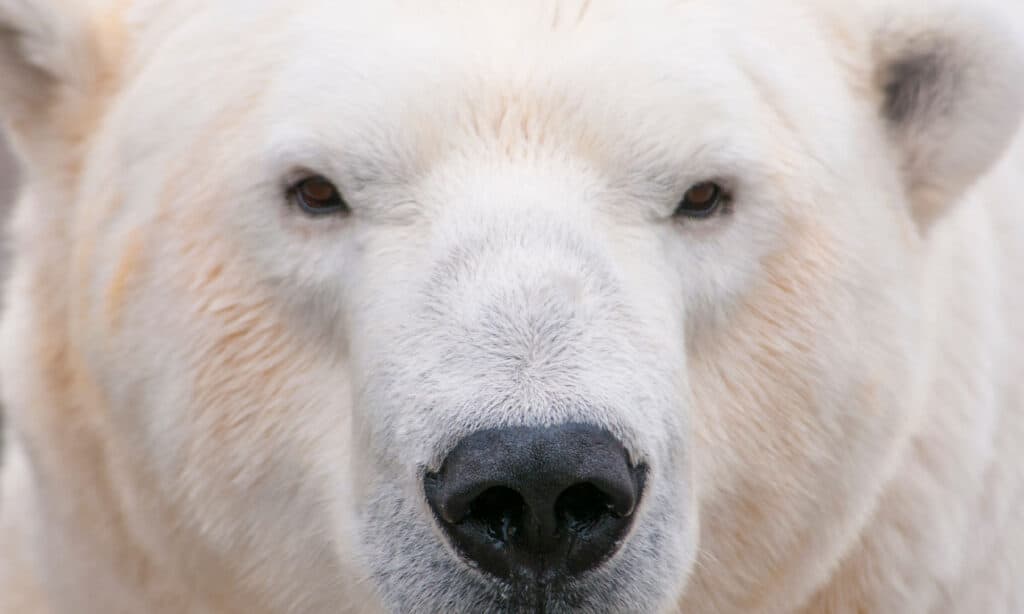
Polar bears need at least 4.5 pounds of fat each day to survive.
©iStock.com/ElliotHurwitt
Size, Sociality, and Learning
Standing over eight feet tall on their hind legs and weighing up to 1,100 pounds, polar bears are one of the largest land predators. In extreme cases, polar bears can weigh over 1,100 pounds. They’re not just about size, however. Polar bears are social creatures that learn from each other’s hunting techniques.
The eager polar bear in the video can learn a thing or two from the patient bear. Instead of swimming out to the belugas, the patient bear sits on a rock and waits for the tide to come in. When the rock’s surrounded by water, the beluga whales swim close enough for the bear to strike.
Beluga Whale Survival Skills
Beluga whales have unique survival skills as well. They’re remarkable Arctic dwellers who know something about avoiding hungry polar bears.
These social creatures live, hunt, and move in groups, ranging from a few individuals to several dozen. Adult belugas typically weigh between 1,100 and 2,500 pounds and measure 11 to 15 feet long. Yet despite their large size, these whales can move incredibly fast.
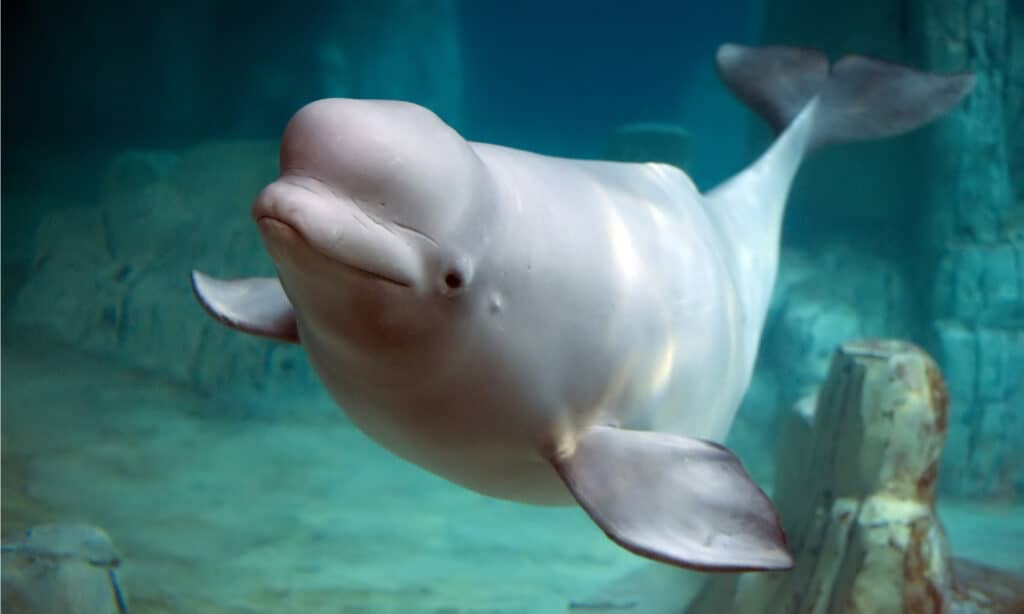
Beluga whales can turn their heads side to side and up and down, helping them look out for predators.
©Luna Vandoorne/Shutterstock.com
Adaptations and Habitat
Belugas can swim up to 14 miles per hour, especially when attempting to escape predators. Their white skin also provides an advantage, allowing them to blend in with Arctic sea ice. They use this camouflage to protect themselves from predators such as orcas and polar bears. Belugas also adapt to changing seasons, moving to warmer bays as coastal glaciers melt in spring.
Unique Characteristics
Similar to how an owl can turn their head like a swivel, belugas also have an advantage with their necks. While they can’t turn their head 360 degrees, they can turn it side to side and up and down. This is because they have unfused neck vertebrae. Turning their heads in multiple directions provides an advantage when searching for prey in icy conditions. It’s also helpful when looking out for hungry polar bears.
Is it Normal for Polar Bears to Hunt and Eat Beluga Whales?
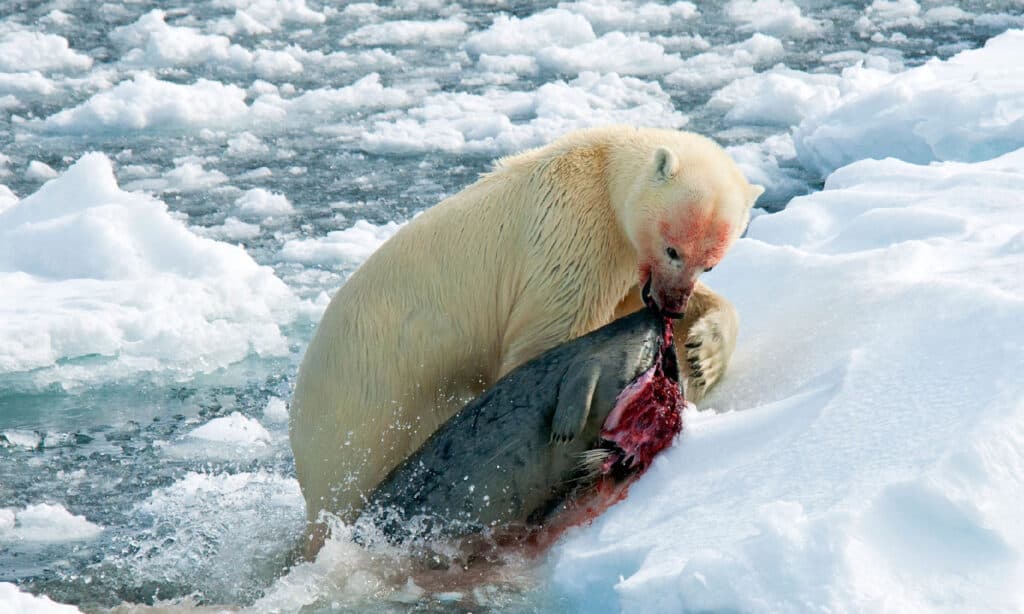
Polar bears usually hunt seals but will eat any meat or fat they can get their paws on.
©iStock.com/AGAMI stock
It is a natural behavior for polar bears to hunt and eat beluga whales. Polar bears are apex predators, meaning they are at the top of the food chain in their Arctic environment. As a result, they have the ability to hunt and consume large prey animals like beluga whales. This is essential for the bears’ survival, as they need to consume enough calories to survive in their environment.
In addition, it is also important for the health and balance of the Arctic ecosystem for polar bears to hunt and eat beluga whales. This helps to maintain the balance of the ecosystem, as the whales provide an important source of food for the bears. Without this food, the bears would be unable to survive in their environment.
The overall diet of a polar bear primarily consists of seals, particularly ringed and bearded seals. However, in some cases, polar bears have been observed hunting and consuming beluga whales. While this behavior is considered normal for polar bears, it does only occur sporadically and can provide an additional food source for these apex predators in certain Arctic regions.
Thank you for reading! Have some feedback for us? Contact the AZ Animals editorial team.





